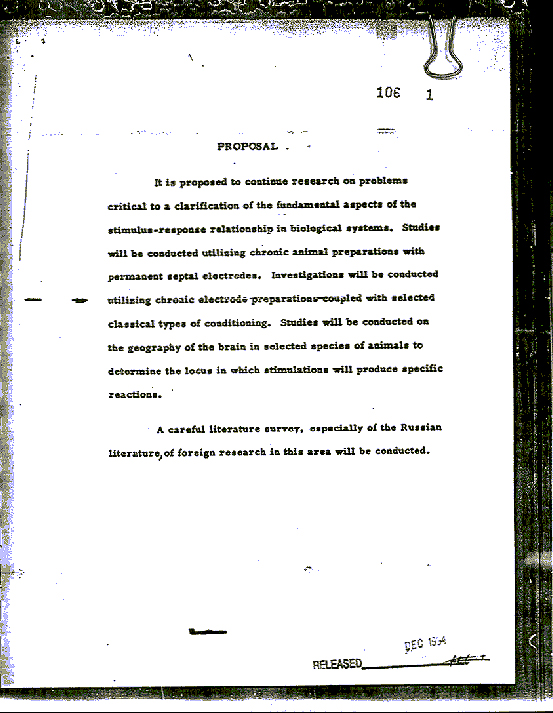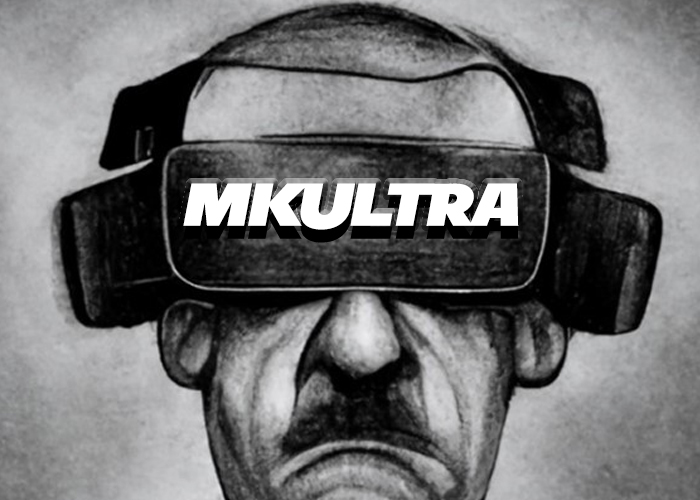MKUltra was a top-secret CIA program that ran from the early 1950s to the 1970s. It involved a series of mind control experiments, many of which were conducted on unsuspecting citizens. The goal was to explore ways of influencing or controlling the human mind, particularly through the use of drugs such as LSD. MKUltra remains one of the most controversial and ethically dubious programs in American history.

This article will delve deeply into MKUltra’s origins, objectives, methods, key events, and the lasting impact it has had on society. We’ll explore the timeline, individuals involved, public revelations, and the effects of this covert operation. While the official narrative about MKUltra has come to light, there are still many unanswered questions that make this topic a fascinating and controversial piece of history.
The Birth of MKUltra
MKUltra began in the early 1950s, during a time when the United States was in the midst of the Cold War, facing threats from the Soviet Union, China, and other communist nations. The CIA was particularly concerned with the potential use of mind control techniques by the enemy to brainwash American citizens, spies, and military personnel. The fear of Soviet “brainwashing” came into public consciousness after the Korean War, where several American soldiers, captured by the enemy, appeared to have been coerced into making pro-communist statements.
At the time, scientists and researchers were exploring ways to manipulate and alter human consciousness using various techniques, including hypnosis, sensory deprivation, and, notably, drugs like LSD.
CIA’s Interest in Mind Control
The idea that the CIA could use drugs and other methods to control people’s thoughts and behavior gained traction with the agency’s leaders. MKUltra was seen as a way to stay ahead of potential Soviet or Chinese psychological tactics. Mind control research was a highly secretive and unethical domain during the Cold War. However, the CIA believed that advancing such knowledge was vital to national security, even if it meant violating basic ethical principles.
The CIA’s chief chemist, Sidney Gottlieb, was assigned to oversee MKUltra. Gottlieb was a chemist by training and had a keen interest in experimenting with drugs and substances that could affect the human mind. He believed LSD, in particular, could be the key to unlocking psychological control.
Key Goals of MKUltra
MKUltra was officially a part of the CIA’s broader research into covert operations and psychological warfare. Its primary goal was to find methods to manipulate people’s thoughts, actions, and memories without their knowledge. The CIA hoped to discover techniques that could be used to influence foreign leaders, gain intelligence, or even render enemy agents incapable of functioning in their roles.
The Use of LSD and Other Drugs
One of the central experiments in MKUltra involved the use of LSD, a powerful hallucinogen that alters perception, consciousness, and reality. The CIA’s interest in LSD began in the 1950s when researchers realized that the drug could have profound effects on the brain. At the time, LSD was not widely known or used outside of experimental circles, and its effects were still largely unexplored.
The CIA sought to investigate LSD’s potential for mind control, particularly its ability to break down mental barriers and reduce resistance to interrogation. The agency believed that LSD could potentially be used as a “truth serum” or to induce confessions from prisoners. Some scientists involved in MKUltra hypothesized that LSD could be used to induce temporary insanity or control someone’s thoughts entirely.
Testing on Unwitting Subjects
To conduct these experiments, the CIA and its contractors often used unsuspecting individuals, including civilians, military personnel, and even government employees. These subjects were typically not informed that they were being experimented on, and they were not given consent. In some cases, people were drugged with LSD without their knowledge, either in a clinical setting or through a more casual, covert method.
One of the most infamous aspects of MKUltra was the practice of “sub-projects,” where experiments were carried out on individuals without their consent. Some people were given LSD without any prior warning, while others were subjected to a variety of physical and mental stressors to test their reactions to these substances.
Places and Locations Involved in MKUltra
The experiments for MKUltra were carried out in multiple locations across the United States and abroad. Some of the key places where MKUltra was carried out include:
- The CIA Headquarters in Langley, Virginia: The central operations for MKUltra were based here. The CIA oversaw various research and testing programs at this location.
- The Edgewood Arsenal in Maryland: This facility was involved in testing chemical and biological agents, including LSD, on military personnel and civilians.
- The University of California, Berkeley: Some researchers and professors involved in MKUltra conducted experiments with LSD here, often using college students as test subjects.
- Canada: The CIA conducted several MKUltra experiments in Canada, including at the Allan Memorial Institute in Montreal. Under the leadership of Dr. Ewen Cameron, a psychiatrist, MKUltra experiments involved subjects being given LSD and subjected to forms of sensory deprivation, hypnosis, and electroconvulsive therapy (ECT).
The MKUltra Methods and Techniques
The methods used in MKUltra were deeply unethical. The experimentation focused on manipulating individuals’ minds in ways that were not only invasive but also destructive to their well-being. The CIA employed a variety of methods to study and induce mind control, some of which are still widely regarded as gross violations of human rights.
LSD and Hallucinogenic Drugs
LSD was the cornerstone of MKUltra experiments. The CIA administered LSD to subjects, often without their knowledge, in attempts to gauge the drug’s effects on behavior, cognition, and personality. In some cases, individuals were kept under observation for extended periods while being dosed with the drug, sometimes resulting in psychological trauma or lasting mental issues.
Hypnosis and Behavior Modification
The CIA was also interested in hypnosis as a way to influence behavior. Some MKUltra experiments involved hypnotizing subjects to see if they could be made to forget things or perform actions against their will. There was also research into using hypnosis to induce altered states of consciousness that could facilitate mind control.
Electroconvulsive Therapy (ECT) and Sensory Deprivation
Some of the more extreme MKUltra experiments involved sensory deprivation and ECT. These methods were used to induce psychological distress and confusion, with the hope of breaking down the subject’s mental defenses and making them more susceptible to control.
The Revelations and Public Exposure of MKUltra
For many years, MKUltra remained classified, and the public was unaware of the experiments taking place. However, in the 1970s, a series of events led to the revelation of the program’s existence.
The Church Committee and the Rockefeller Commission
In 1975, the Church Committee, a U.S. Senate investigative committee led by Senator Frank Church, began to look into abuses of power by the CIA, FBI, and other intelligence agencies. As part of this investigation, the CIA was forced to disclose some of its classified operations, including MKUltra.
The committee discovered that MKUltra had been far more extensive and far-reaching than originally believed. It was revealed that thousands of individuals had been unknowingly subjected to experiments, including some who had been permanently harmed by the exposure to drugs like LSD.
The Release of Documents
In 1977, a Freedom of Information Act (FOIA) request resulted in the release of a trove of CIA documents related to MKUltra. These documents detailed the experiments, the methods used, and the individuals involved. The release of these documents confirmed many of the theories that had circulated for years regarding the CIA’s use of drugs and psychological techniques to control people.
The Impact of MKUltra
The revelations about MKUltra had a significant impact on both the public and the U.S. government. The program raised questions about the ethics of government-funded research, particularly when it comes to human experimentation. It also caused widespread distrust in intelligence agencies and led to reforms in how government research is conducted.
Legal and Ethical Ramifications
In the years following the exposure of MKUltra, a number of lawsuits were filed by victims of the program. Some individuals who had been subjected to experiments with LSD and other drugs sought compensation for the mental harm they suffered. In some cases, the CIA and other government agencies were forced to settle these lawsuits, though the full extent of the harm caused by MKUltra is difficult to quantify.
MKUltra’s Legacy
MKUltra is often cited as one of the darkest chapters in U.S. intelligence history. The program’s unethical methods and disregard for human rights left a lasting scar on the public’s perception of the CIA. While MKUltra officially ended in the 1970s, its legacy continues to resonate in popular culture and conspiracy theories.
Some people argue that MKUltra and its experiments represent the government’s willingness to violate individual rights in the name of national security. Others contend that the program is an example of the extreme measures that governments will take in the pursuit of power and control.
Conclusion
MKUltra was a secretive and controversial CIA program that used drugs, hypnosis, and other methods to experiment on individuals in an attempt to manipulate and control the human mind. Although it was officially terminated in the 1970s, the legacy of MKUltra still looms large, with many unanswered questions about its full extent and impact.
Despite the release of documents and the investigations that followed, much about MKUltra remains shrouded in secrecy. The victims of these experiments continue to seek justice, and the moral and ethical implications of such programs remain a topic of debate to this day.
MKUltra serves as a chilling reminder of the potential for abuse when power is unchecked, and it raises important questions about the boundaries of scientific research, government secrecy, and the protection of individual rights.

